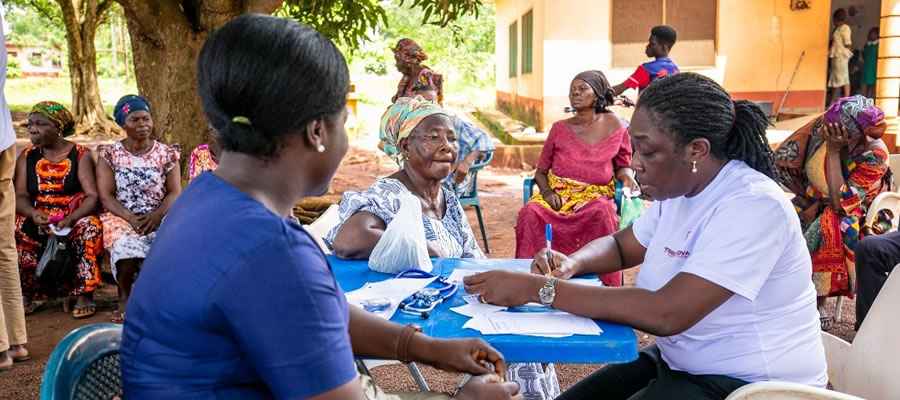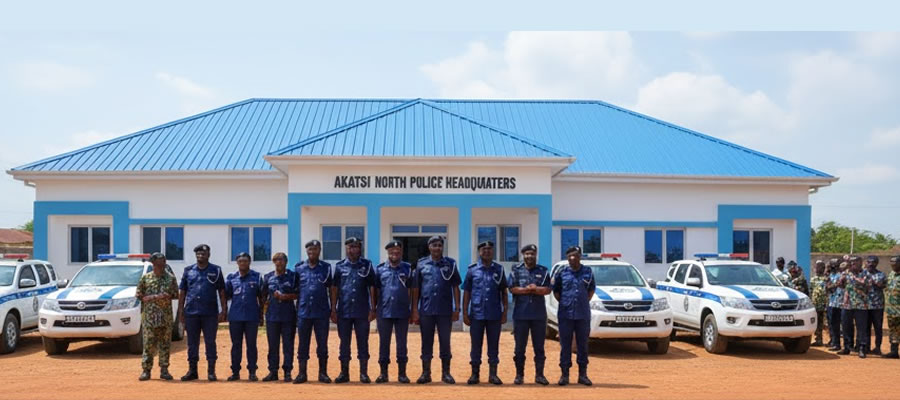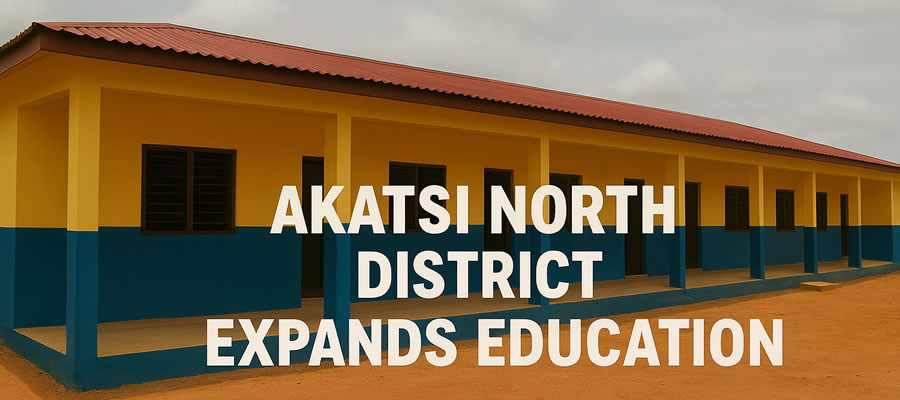
Population size, composition and age-sex structure are important characteristics that have many social and economic implications. Population size and composition influence the region?s potential human resource requirement and level of provision of social services such as schools, hospitals/clinics and housing. The population composition by age and sex influences mortality, nuptiality, fertility, migration and other demographic processes that underlie population growth and ultimately socio-economic development.
Population Size and Growth
The trends in regional population size and growth shows that Volta Region?s population has increased rapidly between 1960 and 2010. The population size has increased from 777,288 in 1960 to 2,118,252 by 2010, more than double in just over fifty years. Between the 2000 and 2010 censuses, the population increased by 29.5 percent, which translates into an intercensal annual growth rate of 2.5 percent.
The distribution of the population by district shows that Ho and Hohoe Municipalities, together account for just over a quarter (of the total regional population). The least populated district is South Dayi with only 2 percent of the regional total population. Other districts with populations of less than four percent of the regional population are Biakoye (3.1%), AdakluAnyigbe (3.0%), Nkwanta North (3.0%), Jasikan (2.8%), and Kadjebi (2.8%).
Population Density
The regional population density has been increasing over the years, from 46 inhabitants per square kilometre (km2) in 1970 to 59 (1984), 79.5 in 2000, and 103 in 2010. This trend reflects increase in the population.
The most densely populated district is Keta Municipal with 358 persons per kilometre, followed by Ketu South with 206 persons per square kilometre, and South Tongu (196 persons per square kilometre). On the other hand, the most sparsely populated districts are Krachi West (29 persons per square kilometre) and Nkwanta South (26.02 persons per kilometre).
Population Distribution (Urban/Rural)
Majority of the people in the region live in the rural areas (66.3%). However, about three out of ten persons live in urban areas. The most urbanized district is Keta Municipal, with more than half (53.3%) of the district?s population living in urban areas, followed by Ketu South (46.6%), and Ho Municipal (44.3%). The districts with very low levels of urbanization include AdakluAnyigbe (10.6%), South Tongu (12.9%), and Krachi West (19.6%).
Age-Sex Structure
The overall age structure of Ghana?s population consists of a broad base made up of a large number of children and a small number of elderly persons at the top. The regional age-sex structure has remained largely unchanged over the ten year intercensal period. Similar proportional shares of male and female populations are observed across the age groups from 0-4 years to 95 and over years in the two censuses. For the age groups 10-14 years and 15-19 years there are more males than females.
The high proportion of the populations aged 0-4 and 5-9 years indicates that the population in the region has the potential to grow for a considerable number of years. This has implications for the economic development of the region. This type of age structure is typical of most developing countries. There are more children at the very young ages (0-9 years) of both sexes in the rural areas than the urban areas, while the opposite is the case for the population at ages 15-49 years. It is also observed that older people aged 60 years and over of both sexes are more likely to be found in the rural areas than urban areas.
This observation sends important signals about the migration trends of what are generally the most economically active segments of the population, and the ageing of the rural population, among other things. Thus the burden of age dependency, both young and old, is felt more in rural areas than urban areas. The proportion of the population less than 15 years in the region decreased from 41.1 percent in 2000 to 38.4 percent in 2010, representing a 2.7 percentage point decrease.
The variations in the proportion of population aged 15-59 years in the region can largely be attributed to in-migration and the proportion of these persons has increased over four decades, particularly since 2000, indicating that the region is becoming more and more a receiving region.
Dependency Ratios
The dependency ratio is one of the key indicators of socio-economic development. Generally, the ratio is higher in developing regions of the world than in developed regions. The regional dependency ratio is quite high at about 81 dependents (child and old age) for every 100 people working. It is also evident in the table that the ratio is high across all the districts, ranging from 66.2 per 100 working population for Ho Municipality to a high of 101.2 for 100 working population for Nkwanta North District. A large part of the total dependency ratios in the districts are child dependency ratios as indicated by the age distribution of the district populations in the table.
Sex Structure
The sex composition of a population is influenced largely by the sex ratio at birth (ratio of male births to female births) as well as sex differences in death rates and migration. In most populations, there is slight excess of males over females at birth but females become the majority at older ages because of the higher death rates for males at all ages. The proportion of females in the region?s population has consistently remained just over 50 percent from 1960-2010. This pattern generally reflects the sex structure of Ghana as a whole.
However, compared to the other censuses, there were proportionally slightly more males in the population in the 1960 census than in the 2010 census. Ho has the largest total population (12.8%), followed closely by Hohoe Municipality (12.4%). Nkwanta North has the lowest share of the population of both sexes (3.0%). In addition, the table shows wide variations in percent shares of males and females across the district. Generally, there are more males than females in the northern districts such as Krachi East, Krachi West and Nkwanta North, while the opposite is the case for the southern districts such as Ho, South Tongu, and Keta Municipal. Three districts with the same proportion of males and females are South Dayi District, and Hohoe Municipal.
Sex Ratios
The sex ratio measures the number of males to females in the population, the balance of the sexes being 100. In most populations the sex ratio favours males at birth. The average sex ratio at birth in most populations is about 105 to 106. The sex ratio at birth in African populations is reported to be 103. The sex ratio decreases with age as a result of differences in death rates at all ages which favour females. The sex ratio is also influenced by migration patterns.The observed sex ratio of 92.8 indicates an excess of females over males in the region – quite simply, about 92 males to 100 females. In the districts, the sex ratio ranges from 83.5 in South Tongu to a high of 108.3 for Krachi East.
The data further suggest three patterns of sex ratio for the districts. The first pattern – districts with low sex ratios – is observed for South Tongu, Keta, Ketu, Akatsi, and North Tongu, where the ratios are as low as 83 to 89 males per 100 females. The second pattern – districts with moderate sex ratios – involves Ho, Hohoe, North Dayi, South Dayi, where there are 90 to 94 males per 100 females. The third pattern – high sex ratios of 97 to 108 males to 100 females – is observed for Jasikan, Kadjebi, Nkwanta North, Nkwanta South, Krachi West, Krachi East and Biakoye. The differences in sex ratios across the region may be a reflection of age-sex pattern of mortality as well as migration in and out of the districts.
Date Created : 12/14/2017 3:22:35 AM












 facebook
facebook
 twitter
twitter
 Youtube
Youtube
 +233 593 831 280
+233 593 831 280 0800 430 430
0800 430 430 GPS: GE-231-4383
GPS: GE-231-4383 info@ghanadistricts.com
info@ghanadistricts.com Box GP1044, Accra, Ghana
Box GP1044, Accra, Ghana